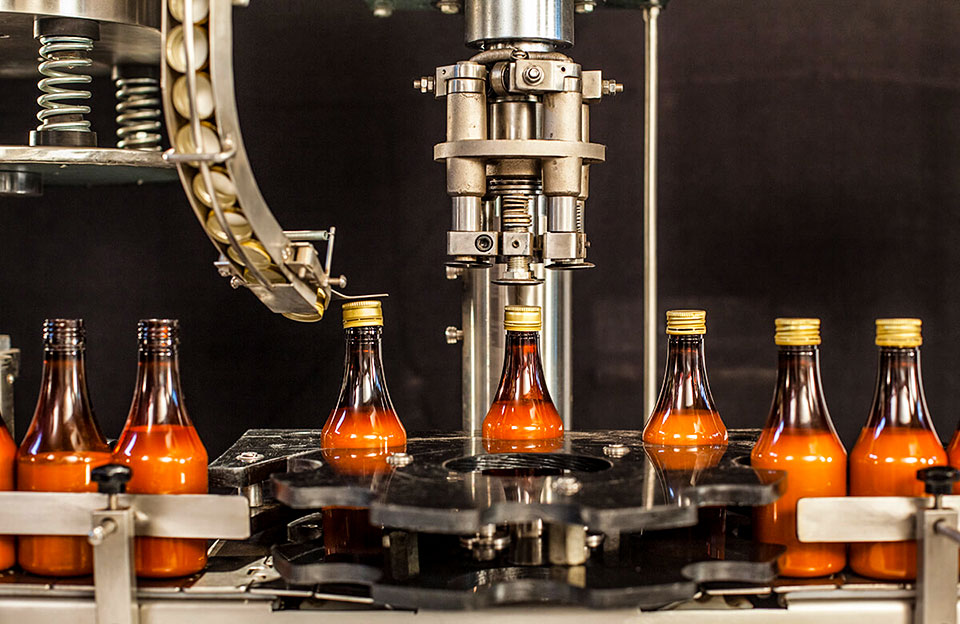Introduction of ROPP Cap
A ROPP cap, also known as a Roll-On Pilfer-Proof cap, is a type of closure used in packaging to seal bottles, jars, and containers. It is designed to provide tamper-evidence and ensure the integrity of the product inside. ROPP caps are commonly used in pharmaceuticals, beverages, edible oils, and chemicals.
The ROPP cap consists of a metal shell and a plastic liner. The metal shell is typically made of aluminum or tinplate and is threaded to match the bottle or container neck. The plastic liner is placed inside the cap and comes in direct contact with the product, providing a seal to prevent leakage or contamination.
ROPP caps offer several advantages over other types of closures. They provide high security and tamper resistance, making them suitable for products that require protection from adulteration or counterfeiting. ROPP caps are known for their leak-proof performance, ensuring the product’s freshness and preventing spills or spoilage.
Introduction and Advantages of ROPP Capping Machine
A ROPP capping machine is specialized mahinery used in the packaging industry to automate the application of ROPP caps (Roll-On Pilfer-Proof caps) onto bottles or containers. It is designed to ensure efficient and accurate capping, providing numerous advantages for manufacturers. ROPP capping machines are commonly used in pharmaceuticals, beverages, oils, and chemicals, where ROPP caps are the preferred closure. These machines are designed to streamline the capping process by automating the application of ROPP caps onto bottles or containers with speed and precision.
Here are some advantages of ROPP capping machine:
- Improve Efficiency: ROPP capping machine can cap bottles at high speed. Compared with manual capping, production efficiency is significantly improved. This helps manufacturers meet production demands and reduces bottlenecks in packaging lines.
- Consistent Closure Quality: The automated nature of the ROPP capper ensures consistent and uniform closure results, providing a consistent seal across all bottles or containers. This helps maintain product integrity and prevents leakage or spoilage.
- Accurate Torque Application: The ROPP capping machine has a precise torque control mechanism to ensure the cap is applied correctly. Accurate torque application reduces the risk of product contamination or spillage.
- Flexibility and Versatility: The ROPP capping machine can easily adjust to accommodate different bottle sizes, shapes, and cap types. This flexibility allows manufacturers to use the same machine for multiple product or packaging requirements, saving time and reducing the need for separate machines.
- Simple Operation: Modern ROPP cappers are designed with a user-friendly interface and intuitive controls. They have touch screens, programmable settings, and automatic adjustments for easy operation and maintenance. This minimizes operator error and training requirements.
- Integration with Packaging Lines: ROPP capping machines can be seamlessly integrated into existing packaging lines for a smooth and continuous production process. They can be synchronized with other equipment, such as fillers and labelers, to create a fully automated packaging system.
- Saving Costs and Time: ROPP cappers help reduce labor costs associated with manual capping. They also minimize the risk of rework or product recalls due to improperly sealed containers, saving time and resources.
5 Factors Affecting the Market Prospect of ROPP Capping Machine
The ROPP (Roll-On Pilfer-Proof) capping machine is widely used in the packaging industry to securely seal bottles with metal caps. It provides a tamper-evident closure that is difficult to remove without visible signs of tampering. Several factors influence the market prospects of ROPP capping machines:
- Industry Growth: The growth of industries that utilize ROPP capping machines, such as the pharmaceutical, beverage, and cosmetics industries, directly impacts the demand for these machines. The demand for efficient and reliable capping machines will increase as these industries expand globally.
- Automation and Efficiency: There is a growing trend towards automation and increased efficiency in packaging processes. ROPP capping machines have evolved to incorporate advanced automation technologies, including robotics, servo motors, and computerized controls. This enables faster and more precise capping, reducing downtime and increasing production rates. Further advancements in automation and integration with other packaging equipment can enhance the prospects of ROPP capping machines.
- Packaging Regulations: Governments and regulatory bodies often impose stringent regulations on packaging to ensure product safety, integrity, and consumer protection. ROPP capping machines provide a secure seal that meets many regulatory requirements. As regulations evolve, the demand for ROPP capping machines that comply with these standards will likely grow.
- Innovation and Customization: Manufacturers of ROPP capping machines are continuously innovating to meet the evolving needs of the packaging industry. This includes developing machines capable of handling a wide range of bottle sizes and shapes, incorporating new closure technologies, and improving ease of use and maintenance. Customization options that allow businesses to adapt capping machines to their specific requirements can also drive the prospects of ROPP capping machines.
- Sustainability: Sustainability considerations are increasingly important in packaging. ROPP capping machines offering eco-friendly features, such as reduced energy consumption, use of recyclable materials, and optimized packaging designs, will likely have better development prospects. Manufacturers prioritizing sustainable practices and providing environmentally conscious solutions may gain a competitive advantage in the market.
Conclusion
The development prospects of ROPP capping machines are promising, driven by industry growth, automation, regulatory compliance, innovation, customization, and sustainability. As the packaging industry continues to evolve, ROPP capping machines will likely adapt and improve to meet the changing demands of manufacturers and consumers.


